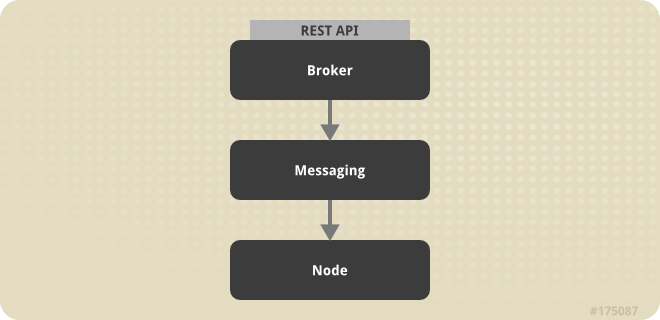Chapter 3. Architecture
OpenShift Enterprise consists of several components. This section provides information about the primary components, and the various configurations described in this guide. The diagrams in subsequent sections depict elements using the following legend:
Figure 3.1. OpenShift Enterprise Components Legend
An OpenShift Enterprise deployment consists of two logical types of hosts: a broker and one or more nodes. The broker handles the creation and management of user applications, the user authentication service, and manages communication with the appropriate nodes. The nodes run the user applications in contained environments called gears. The broker queries and controls nodes using a messaging service. The following diagram provides a simplified version of the interaction between these two types of hosts:
Figure 3.2. OpenShift Enterprise Host Types
Warning
The OpenShift Enterprise security model assumes that broker and node components are installed on separate hosts. Running a broker and node on the same host is not supported.
3.1. Communication Mechanisms
Copy linkLink copied to clipboard!
Communication from external clients, such as the client tools or the Management Console, occurs through the REST API that is hosted by the broker. The broker then communicates to the nodes using the messaging service component. MCollective queries a set of nodes and communicates securely with individual nodes. The following diagram provides a high-level description of this communication:
Figure 3.3. OpenShift Enterprise Communication Mechanisms


